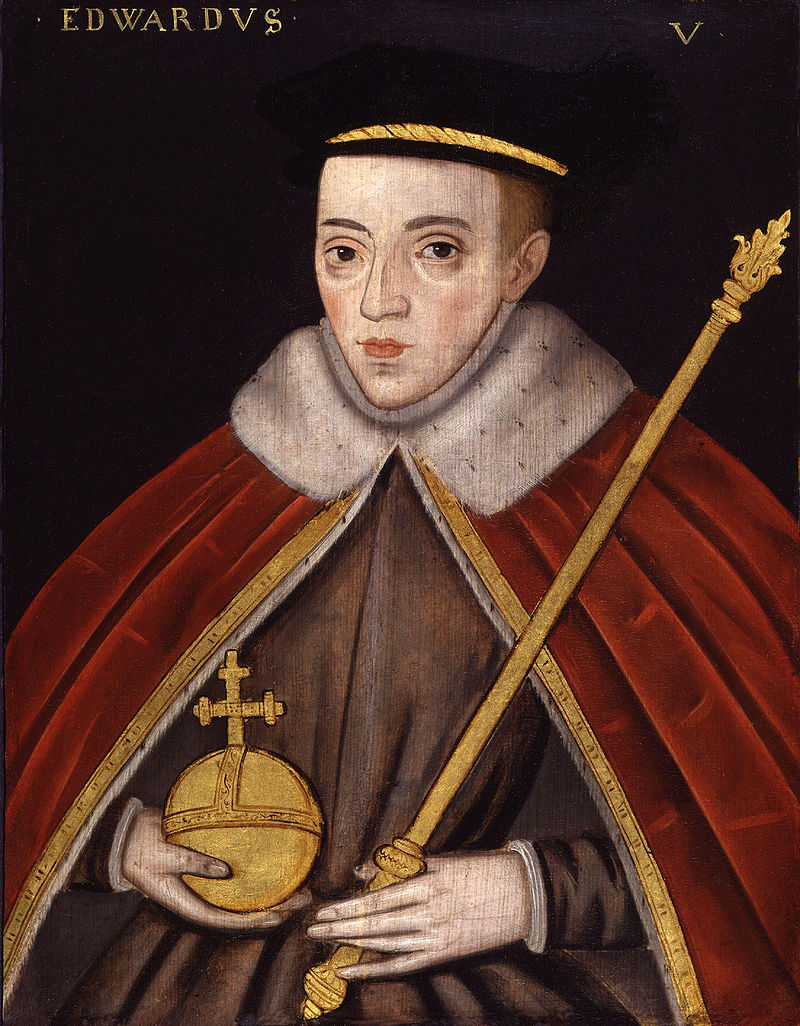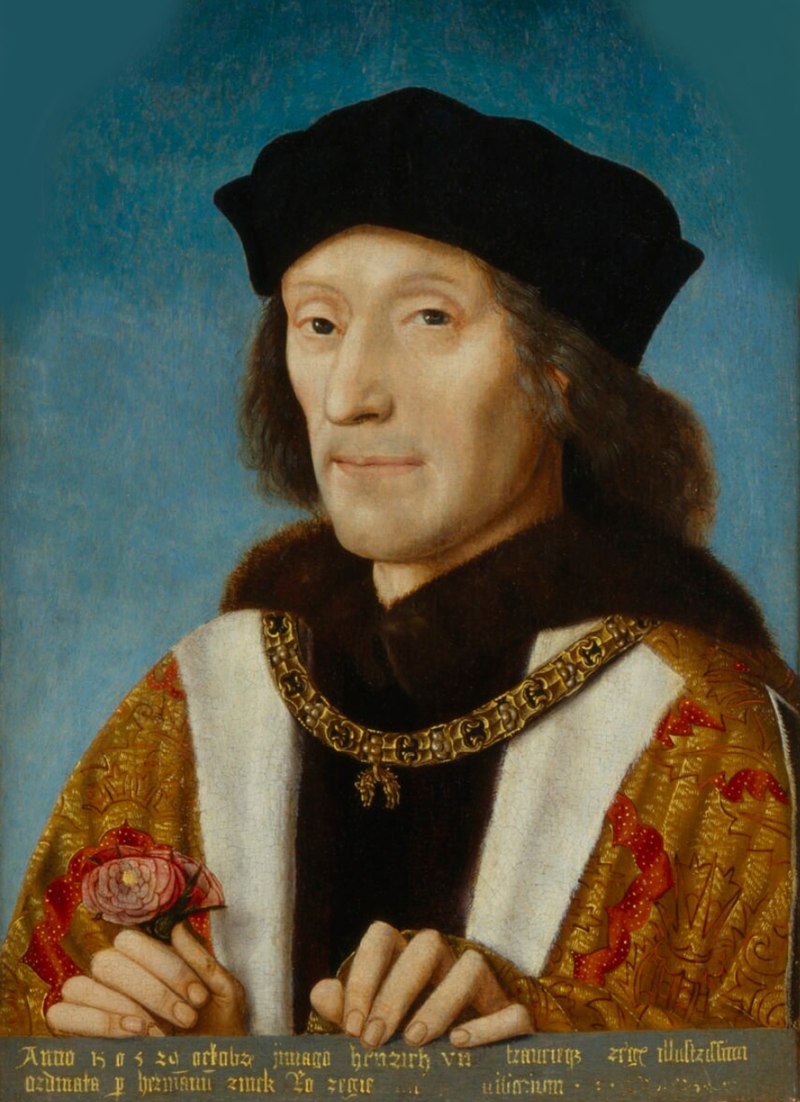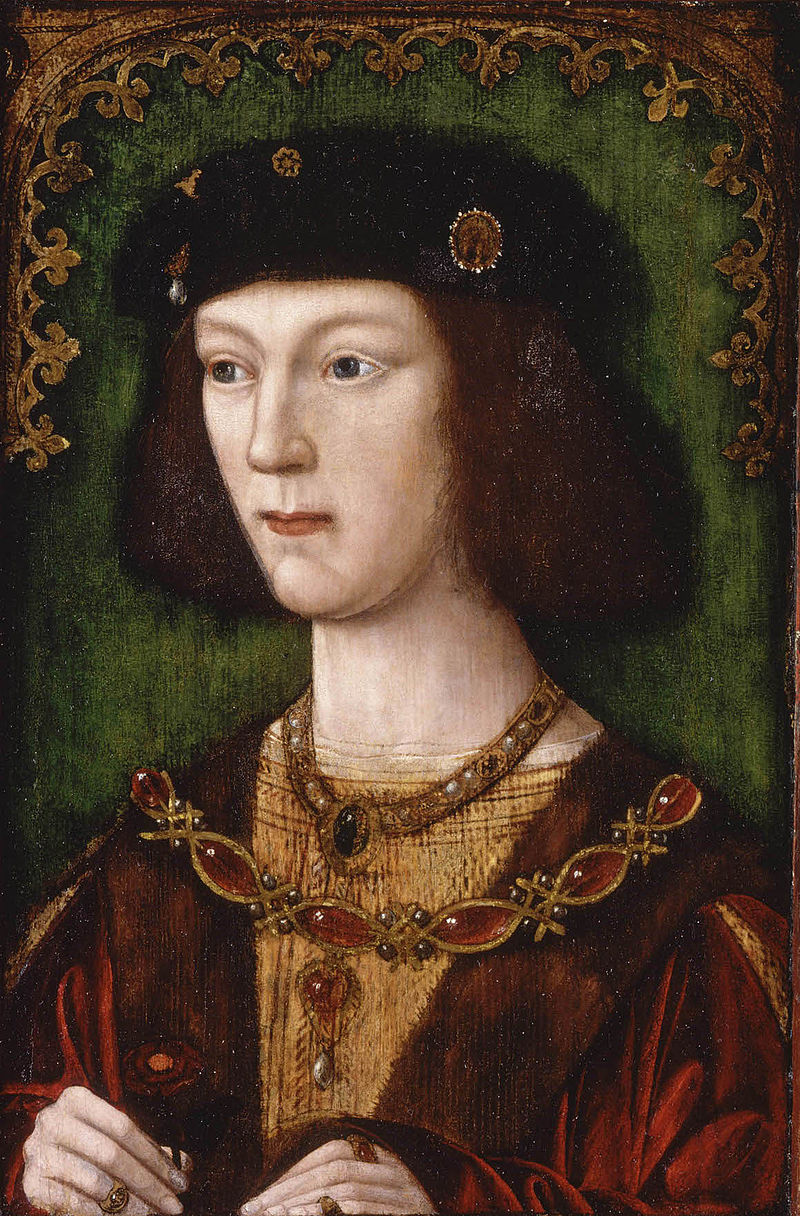by Susan Flantzer
© Unofficial Royalty 2023
Bridget of York; Credit – Wikipedia
Destined to be a nun, Bridget of York was born on November 10, 1480, at Eltham Palace in London, England. She was the youngest of the ten children and the seventh of the seven daughters of King Edward IV of England, the first King of England from the House of York, and Elizabeth Woodville. Bridget’s paternal grandparents were Richard of York, 3rd Duke of York and Cecily Neville, both great-grandchildren of King Edward III of England. Her maternal grandparents were Sir Richard Woodville, 1st Earl Rivers and Jacquetta of Luxembourg.
The name Bridget was unusual for the English royal family. It was probably chosen by her paternal grandmother Cecily Neville, Duchess of York who was interested in the Order of the Bridgettines which St. Bridget of Sweden (circa 1303 – 1373) founded. The infant princess was baptized in the chapel of Eltham Palace the day after her birth with her paternal grandmother Cecily Neville, her eldest sister Elizabeth of York, and William Waynflete, Bishop of Winchester acting as her godparents. Bridget was confirmed immediately after her baptism with her maternal aunt Margaret Woodville, Lady Maltravers acting as her sponsor.

Bridget’s father King Edward IV of England; Credit – Wikipedia
Bridget’s father King Edward IV was the eldest surviving son of Richard of York, 3rd Duke of York who had a strong claim to the English throne. The social and financial troubles that followed the Hundred Years’ War, combined with the mental disability and weak rule of the Lancastrian King Henry VI had revived interest in the claim of Richard, 3rd Duke of York, and so the Wars of the Roses were fought between supporters of two rival branches of the royal House of Plantagenet, the House of Lancaster and the House of York between 1455 and 1487. Richard, 3rd Duke of York was killed on December 30, 1460, at the Battle of Wakefield and his son Edward was then the leader of the House of York. After winning a decisive victory on March 2, 1461, at the Battle of Mortimer’s Cross, 19-year-old Edward proclaimed himself king. In 1464, King Edward IV married Elizabeth Woodville.
Bridget’s mother Elizabeth Woodville; Credit – Wikipedia
Bridget had nine siblings:
- Elizabeth of York (1466 – 1503), married King Henry VII of England, had seven children including King Henry VIII of England, Margaret Tudor, Queen of Scots, and Mary Tudor, Queen of France
- Mary of York (1467 – 1482), unmarried, died in her teens
- Cecily of York, Viscountess Welles (1469 – 1507), married (1) Ralph Scrope of Upsall, no children, marriage annulled (2) John Welles, 1st Viscount Welles, had two daughters who died young (3) Sir Thomas Kyme, possible children
- King Edward V of England (1470 – circa 1483), briefly succeeded his father, as King Edward V of England, was the elder of the Princes in the Tower
- Margaret of York (born and died 1472)
- Richard of Shrewsbury, 1st Duke of York (1473 – circa 1483), was the younger of the Princes in the Tower
- Anne of York, Lady Howard (1475 – circa 1511 – 1513), married Lord Thomas Howard, the future 3rd Duke of Norfolk, had four children but none survived childhood
- George Plantagenet, 1st Duke of Bedford (1477 – 1479), died in childhood probably from the bubonic plague
- Catherine of York, Countess of Devon (1479 – 1527), married William Courtenay, 1st Earl of Devon, had two sons and one daughter
Bridget had two half-brothers from her mother’s first marriage to Sir John Grey of Groby:
- Thomas Grey, 1st Marquess of Dorset (1455 – 1501), married (1) Anne Holland, no children; (2) Cecily Bonville, 7th Baroness Harington and 2nd Baroness Bonville, had 14 children; Thomas and Cecily are the great-grandparents of Lady Jane Grey
- Sir Richard Grey (1457 – 1483), unmarried, executed by Richard, Duke of Gloucester (future King Richard III)

Bridget’s brother King Edward V of England, one of the missing Princes in the Tower; Credit – Wikipedia
When Bridget was two-years-old, her father King Edward IV died on April 9, 1483, a few weeks before his 41st birthday. Bridget’s twelve-year-old brother succeeded their father as King Edward V, and King Edward IV’s brother, Richard, Duke of Gloucester, was named Lord Protector of his young nephew and moved to keep the Woodvilles, the family of Edward IV’s widow Elizabeth Woodville, from exercising power. The widowed queen sought to gain political power for her family by appointing family members to key positions and rushing the coronation of her young son. The new king was accompanied to London by his maternal uncle Anthony Woodville, 2nd Earl Rivers and his half-brother Sir Richard Grey. Rivers and Grey were accused of planning to assassinate Richard, Duke of Gloucester, and were arrested, and taken to Pontefract Castle, where they were later executed without trial. Richard, Duke of Gloucester then proceeded with the new king to London where Edward V was presented to the Lord Mayor of London. For their safety, King Edward V and his nine-year-old brother Richard, Duke of York were sent to the Tower of London and were never seen again. They are the famous Princes in the Tower.
On June 22, 1483, a sermon was preached at St. Paul’s Cross in London declaring Edward IV’s marriage to Elizabeth Woodville invalid and his children illegitimate. This information came from Robert Stillington, Bishop of Bath and Wells, who claimed a legal pre-contract of marriage to Eleanor Butler, had invalidated King Edward IV’s later marriage to Elizabeth Woodville. The citizens of London presented Richard, Duke of Gloucester with a petition urging him to assume the throne, and he was proclaimed king on June 26, 1483. King Richard III and his wife Anne Neville were crowned in Westminster Abbey on July 6, 1483, and their son Edward of Middleham was created Prince of Wales. In January 1484, Parliament issued the Titulus Regius, a statute proclaiming Richard the rightful king.

Bridget’s brother-in-law King Henry VII of England; Credit – Wikipedia
On August 22, 1485, Henry Tudor from the House of Lancaster defeated King Richard III at the Battle of Bosworth Field and became King Henry VII, the first Tudor king of England. On January 18, 1486, Henry VII married Bridget’s eldest sister Elizabeth of York uniting the House of Lancaster and the House of York into the new House of Tudor. Henry VII had Parliament repeal the Titulus Regius, the act that declared King Edward IV’s marriage invalid and his children illegitimate, thereby legitimizing his wife.

Bridget’s sister Elizabeth of York, wife of King Henry VII and mother of King Henry VIII; Credit – Wikipedia
It is probable that early in her life, Bridget’s parents began to consider sending her to a convent where she would lead a religious life as a nun. Her uncle King Richard III planned to marry Bridget to one of his supporters when she was old enough. Bridget’s brother-in-law King Henry VII had similar marriage plans but when Bridget expressed a strong desire to become a nun, no marriage arrangements were made for her.

Dedication of Bridget to the nunnery at Dartford, as imagined by James Northcote,1822; Credit – Wikipedia
When Bridget entered Dartford Priory in Dartford, Kent, England to become a nun is unknown. It happened after 1486, the year Bridget turned six-years-old, when marriage arrangements (the marriages never happened) for two of Bridget’s sisters were made with Scottish princes, but before 1492, the year Bridget’s mother died and the year that Bridget’s twelfth birthday occurred. Her mother Queen Dowager Elizabeth Woodville died at Bermondsey Abbey in London, England on June 8, 1492, at the age of 55. Except for her daughter Queen Elizabeth, who was awaiting the birth of her fourth child, and her daughter Cecily, her other daughters, Anne, Catherine, and Bridget attended her funeral at St. George’s Chapel at Windsor Castle where Elizabeth Woodville was buried with her husband King Edward IV of England. It is known that twelve-year-old Bridget left Dartford Priory to attend her mother’s funeral and returned to the priory after the funeral.
Dartford Priory, founded by King Edward III and developed under his grandson and successor King Richard II, was chosen for Bridget because of its royal background and because it was common for daughters of the nobility to become nuns there. The nuns were dedicated to a contemplative life and spent their time in prayer and spiritual recreation, such as devotional reading. Dartford Priory was an enclosed or cloistered convent and the nuns there separated themselves from the outside world. Except for her mother’s funeral, there is no evidence that Bridget ever left Dartford Priory.
Very little is known about Bridget’s life once she entered Dartford Priory. She did exchange letters with her eldest sister Queen Elizabeth who provided some funds for Bridget’s expenses. Sir Thomas More (1478 – 1535), the English humanist, lawyer, philosopher, author, statesman, and noted Renaissance humanist, wrote of Bridget, “Bridget represented the same virtue as the one whose name she bore, professing and observing the canons of religious life in Dartford.”

Bridget’s nephew King Henry VIII in 1509; Credit – Wikipedia
On February 2, 1503, Bridget’s eldest sister Queen Elizabeth gave birth to her seventh child, a daughter Katherine. Shortly after giving birth, Elizabeth became ill with puerperal fever (childbed fever) and died on February 11, 1503, her 37th birthday. Little Katherine died on February 18, 1503. In 1509, Bridget’s brother-in-law King Henry VII died and was succeeded by his son and Bridget’s nephew King Henry VIII.
Bridget died at Dartford Priory but exactly when she died is unknown. John Weever (1576 – 1632), an English antiquarian and poet, wrote in his 1631 book Ancient Funerall Monuments that Bridget died in 1517. Sir Thomas More, writing in his 1513 book History of King Richard III, does not say she is alive but mentions that her only surviving sibling Catherine was still living, so possibly Bridget died before 1513. Bridget was interred in the choir of the Dartford Priory church. However, Dartford Priory was destroyed during the Dissolution of the Monasteries (1536 – 1541), administrative and legal processes ordered ironically by her nephew King Henry VIII who had a new royal manor house constructed on the property. Henry VIII’s fourth wife Anne of Cleves lived at the new manor house for four years before her death in 1557.
This article is the intellectual property of Unofficial Royalty and is NOT TO BE COPIED, EDITED, OR POSTED IN ANY FORM ON ANOTHER WEBSITE under any circumstances. It is permissible to use a link that directs to Unofficial Royalty.
Works Cited
- Bridget of York (2023) Wikipedia. Wikimedia Foundation. Available at: https://en.wikipedia.org/wiki/Bridget_of_York (Accessed: February 6, 2023).
- Flantzer, Susan. (2016) Elizabeth of York, Queen of England, Unofficial Royalty. Available at: https://www.unofficialroyalty.com/elizabeth-of-york-queen-of-england/ (Accessed: February 6, 2023).
- Flantzer, Susan. (2016) King Edward IV of England, Unofficial Royalty. Available at: https://www.unofficialroyalty.com/king-edward-iv-of-england/ (Accessed: February 6, 2023).
- Higginbotham, Susan. (2012) A Royal Christening: Bridget of York, November 11, 1480, Susan Higginbotham. Available at: https://www.susanhigginbotham.com/posts/a-royal-christening-bridget-of-york-november-11-1480/ (Accessed: February 6, 2023).
- Higginbotham, Susan. (2013) Bridget of York: A Royal Nun, Susan Higginbotham. Available at: https://www.susanhigginbotham.com/posts/bridget-of-york-a-royal-nun/ (Accessed: February 6, 2023).
- Jones, Dan. (2012) The Plantagenets. New York: Viking.
- Weir, Alison. (1989) Britain’s Royal Families: The Complete Genealogy. London: Vintage Books.
- Williamson, David. (1996) Brewer’s British Royalty: A Phrase and Fable Dictionary. London: Cassell.
